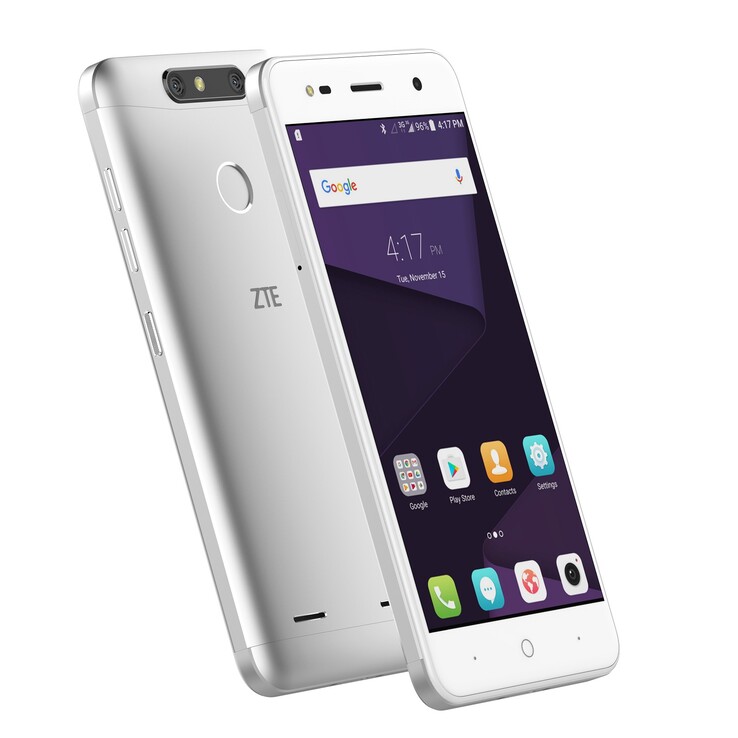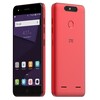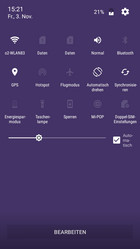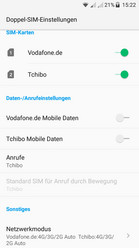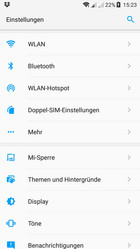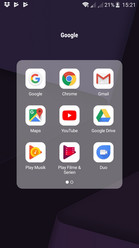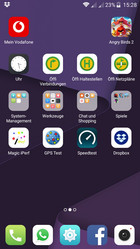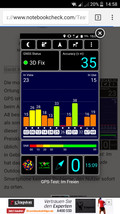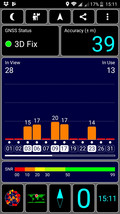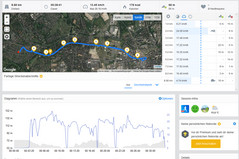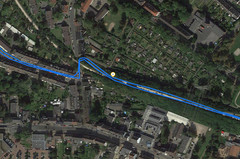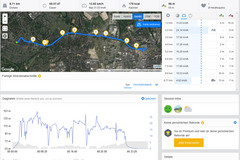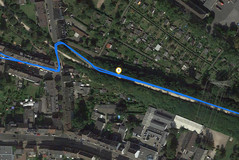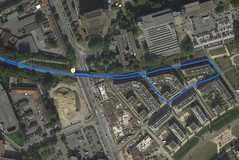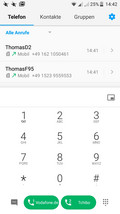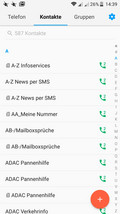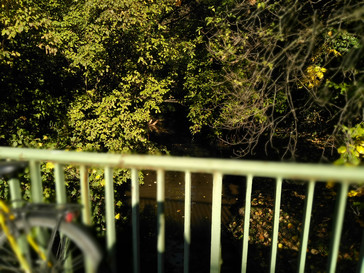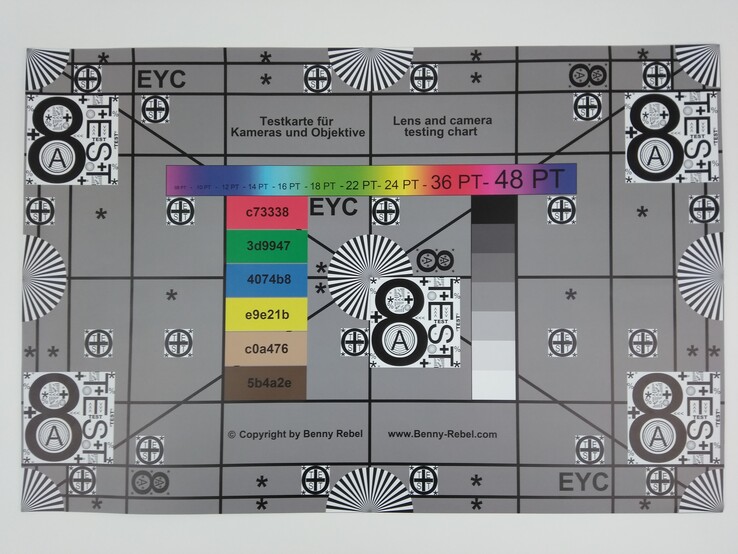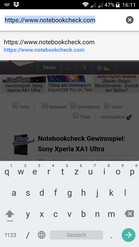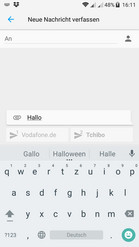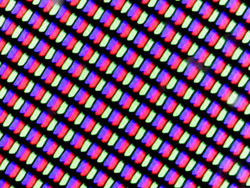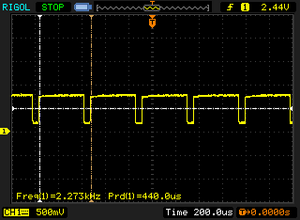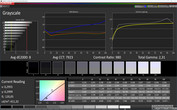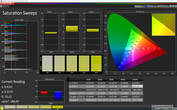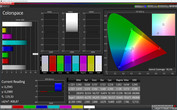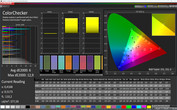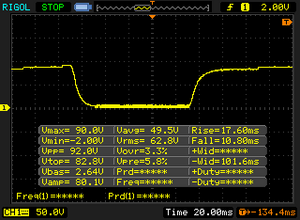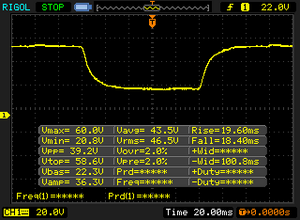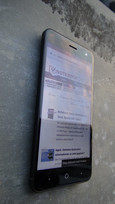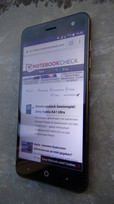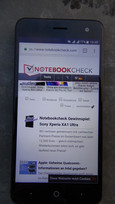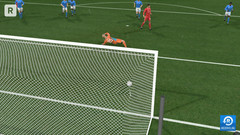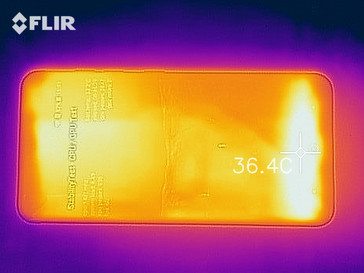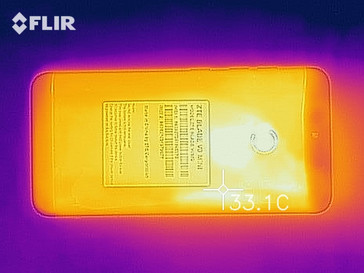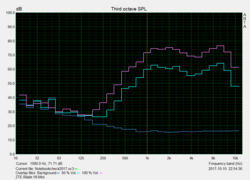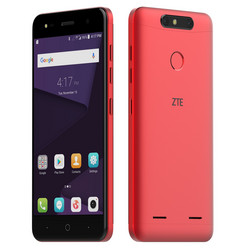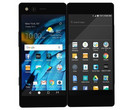ZTE Blade V8 Mini Smartphone Review
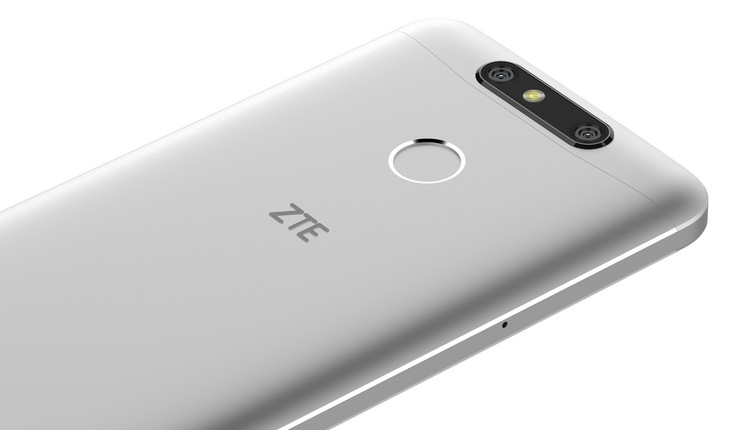
For the original German review, see here.
Chinese manufacturers are jumping more and more into the European and American markets. The best known example is undoubtedly Huawei, but other manufacturers from Southeast Asia – such as ZTE – are expanding their presence. ZTE, the publicity-seeking 2016 co-sponsor of the Borussia Mönchengladbach football club, is now offering the ZTE Blade V8 Mini as another device with a good range of features at an intriguing price.
The highlight of the ZTE Blade V8 Mini is certainly the dual camera, with a maximum resolution of 13 MP and the ability to take shots with bokeh and 3D effects. The second camera has a resolution of up to 5 MP. Unlike the 2016 ZTE Blade V7 Lite, which is roughly the same size, the ZTE Blade V8 Mini is not housed in a classy aluminum case, but rather one fashioned out of tough polycarbonate. A fingerprint scanner is located on the back. The user operates the ZTE Blade V8 Mini via a 5-inch display with HD resolution. ZTE overlays Google's Android 7.0 operating system with their MiFavor version 4.2 user interface. The octa-core processor clocks at 1.4 GHz. As an alternative to a microSD card, the user can opt to insert a nano SIM card, which transforms the ZTE Blade V8 Mini into a dual SIM smartphone.
As we examine the ZTE Blade V8 Mini in detail, we will compare it against the competing Gigaset GS170 and Samsung Galaxy J3 (2017). Both Android smartphones are equipped with a 5-inch HD display, a 13 MP main camera, and 16 GB of internal storage, as well as similarly fast processors and 2 GB of RAM. The cheapest device in this trio is the Gigaset GS170, with an internet price of about 130 Euros (~$150; also not currently available on the US market). The Samsung Galaxy J3 can be obtained for a price of about 170 Euros (~$200; $150 in the US). At a market cost of around 160 Euros (~$190, not yet available in the US), the ZTE Blade V8 Mini's price point lies in the middle.
Case
The on/off and volume buttons are located prominently on the right side of the ZTE Blade V8 Mini's case. The 2800 mAh battery is permanently installed in the unibody case.
The fingerprint scanner is found on the back of the ZTE Blade V8 Mini. In terms of its position, this is not optimal, given that it is located outside of the user's field of view. However, the scanner functions reliably. The ZTE Blade V8 Mini is available in black, silver, gold, pink and red – but the surface of the back of the device is extremely prone to fingerprints. ZTE has not protected the Blade V8 Mini against dirt and water, but its manufacturing quality is good – especially for this price bracket.
At 143.5 x 70 x 8.9 mm (5.65 x 2.76 x 0.35 inches), the ZTE Blade V8 Mini is attractively compact. This size is ideal for sticking the smartphone in a jeans pocket. Additionally, the device's weight of 142 grams (0.31 pounds) is not excessive.
Connectivity
The ZTE Blade V8 Mini runs on a Qualcomm Snapdragon 435 (SD435), a lower mid-range SoC for Android smartphones and tablets. Unlike the Qualcomm Snapdragon 630, this chip is still produced using the 28 nm process technology, but it likewise offers an ARM Cortex A53 octa-core processor unit. However, this processor only reaches clock speeds of up to 1.4 GHz. The integrated X9 LTE modem supports category 7 LTE and thus a maximum download speed of 300 MBit/s and upload speed of 100 MBit/s.
Additionally, an Adreno 505 graphics card is integrated with support for Vulkan and OpenGL ES 3.1. WLAN 802.11ac and Bluetooth version 4.1 are also supported. The memory controller supports LPDDR3 at 800 MHz.
The ZTE Blade V8 Mini's flexibility is also praiseworthy. Inserting two nano SIM cards into the unibody case's sturdy card slot transforms the device into a dual SIM smartphone. Those who need only one SIM card can choose to stick in a microSDHC or microSDXC memory card. The ZTE Blade V8 Mini's internal storage amounts to 16 GB, as is typical of devices in this price range.
The micro USB 2.0 connection is located on the bottom edge of the ZTE Blade V8 Mini. It serves exclusively to charge the device and transfer data. Above the display and to the right lies an LED light for notifications.
Software
Android 7.0 (Nougat) serves as the ZTE Blade V8 Mini's operating system. ZTE has yet to disclose when (or whether) the smartphone's OS might be updated to Android 8.0. ZTE has overlaid the Android operating system with the current version (4.2) of their MiFavor user interface. Unfortunately, this means that all apps must be stored on the home screen – but the user can create folders to establish a sense of order.
Communication and GPS
The WLAN module integrated into the ZTE Blade V8 Mini supports the IEEE 802.11 b/g/n standards and transmits only on the 2.4 GHz band. At 51.9 MBit/s, the transfer speed to our Linksys EA 8500 reference router is on par with the competition. In direct proximity to the router (O2 HomeBox 2), the attenuation of just under -33 dBm is comparably low.
The ZTE Blade V8 Mini can surf the internet via LTE with both nano SIM cards. It goes without saying that it also supports GSM and UMTS. Bluetooth version 4.1 is on board as well. An NFC chip is seldom present in this price bracket – the ZTE Blade V8 Mini is no exception here.
| Networking | |
| iperf3 transmit AX12 | |
| Nokia 5 | |
| Samsung Galaxy J3 2017 | |
| ZTE Blade V8 | |
| ZTE Blade V8 Mini | |
| Gigaset GS170 | |
| iperf3 receive AX12 | |
| Nokia 5 | |
| ZTE Blade V8 | |
| Gigaset GS170 | |
| ZTE Blade V8 Mini | |
| Samsung Galaxy J3 2017 | |
The ZTE Blade V8 Mini's mobile positioning via GPS is satisfactory. Even indoors the Android smartphone did not have any trouble positioning the user, but the GPS sensor's accuracy is mediocre overall.
Our editorial staff also assessed the ZTE Blade V8 Mini on an 8.7 km (~5.4 mi) long test route, comparing its results to those of the Garmin Edge 500 bicycle navigation system. In the end, the recorded distance traveled differed by a negligible 30 meters (~98 ft).
Phone Function and Call Quality
As an Android smartphone, the ZTE Blade V8 Mini uses the familiar Google telephone app, in which the user can save Favorites and log calls. Unfortunately, the keys on the virtual number pad lack borders, but their size enables the user to hit them accurately.
The ZTE Blade V8 Mini's speech quality indoors is acceptable, though the smartphone's telephone function makes a better impression outdoors. Sadly, the speakers are a little weak and thus diminish the call quality in speaker mode.
Cameras
A highlight of the ZTE Blade V8 Mini is undoubtedly the dual camera on the back, which comprises a 13 MP autofocus camera and a fixed-focus camera with a resolution of two MP. A photo taken with the ZTE Blade V8 Mini's dual camera has the necessary information to become a virtual 3D shot, but the bokeh function is even more interesting. It allows the user to change the focus and the aperture after the photo is taken.
Unfortunately, this function is not yet fully developed – when the focus is fixed on narrow objects, but the aperture is changed from f/1.0 to f/8.0 (as in our photo below), the whole image becomes blurry. In addition, the ZTE Blade V8 Mini takes a relatively long time to convert the photo. Shots taken with the 13 MP autofocus main camera are sometimes underexposed in diffuse lighting situations, but the pictures look fine when taken in daylight.
The ZTE Blade V8 Mini's second camera is significantly inferior to the main camera. Its maximum resolution is only five MP, and the image borders are unmistakably blurry. On the other hand, the camera has a built-in flash – a rarity in this price category.
We subjected the ZTE Blade V8 Mini's main camera to one more test. Under standardized lighting, we shoot a reference image. This procedure simulates photographing scenes that are often challenging for lenses to capture accurately, such as fine lines or text in front of a colorful background. And indeed, in our assessment the ZTE Blade V8 Mini's lens does not do particularly well. Text in front of a red background is a little blurry, the borders of the lines exhibit color fringing, and the image looks unevenly illuminated. Colors are somewhat oversaturated in images captured with the ZTE Blade V8 Mini.
Accessories and Warranty
The usual accessories accompany the ZTE Blade V8 Mini in its box: a short guide, a data transfer/charging cable, a plug adapter, and a stereo headset. ZTE also includes a little metal clasp to open the card slot on the side of the case. The warranty period is 24 months (in accordance with EU law – not applicable for devices purchased in the US). Please see our Guarantees, Return Policies & Warranties FAQ for country-specific information.
Input Devices & Operation
The ZTE Blade V8 Mini is operated via the usual three capacitive buttons below the display, which unfortunately do not light up on contact. The buttons are assigned the functions "Back", "Home" and "Multi-tasking". For text and numerical input, Google's familiar on-screen keyboard stands at the ready.
The ZTE Blade V8 Mini's display reacts with sufficient sensitivity to pressure. In terms of its ability to interpret input accurately, we find no fault with the device.
Unfortunately, the ZTE Blade V8 Mini's 5-inch display offers nothing more than HD resolution, while other smartphones in this price bracket – such as the Lenovo Moto G5 – are equipped with a Full HD display. In normal use, this is not an issue, but it is noticeable when playing games. It is also a shame that the automatic brightness regulation often sets the brightness level too high. If the ZTE Blade V8 Mini is running out of juice, it would be better to adjust the brightness manually.
| |||||||||||||||||||||||||
Brightness Distribution: 93 %
Center on Battery: 413 cd/m²
Contrast: 1007:1 (Black: 0.41 cd/m²)
ΔE ColorChecker Calman: 6 | ∀{0.5-29.43 Ø4.78}
ΔE Greyscale Calman: 8 | ∀{0.09-98 Ø5}
Gamma: 2.31
CCT: 7923 K
| ZTE Blade V8 Mini 1280x720, 5" | ZTE Blade V8 IPS, 1920x1080, 5.2" | Nokia 5 IPS, 1280x720, 5.2" | Gigaset GS170 IPS, 1280x720, 5" | Samsung Galaxy J3 2017 PLS, 1280x720, 5" | |
|---|---|---|---|---|---|
| Screen | 9% | 18% | -21% | 29% | |
| Brightness middle (cd/m²) | 413 | 482 17% | 630 53% | 418 1% | 502 22% |
| Brightness (cd/m²) | 403 | 448 11% | 635 58% | 418 4% | 494 23% |
| Brightness Distribution (%) | 93 | 79 -15% | 90 -3% | 92 -1% | 89 -4% |
| Black Level * (cd/m²) | 0.41 | 0.64 -56% | 0.57 -39% | 0.45 -10% | 0.35 15% |
| Contrast (:1) | 1007 | 753 -25% | 1105 10% | 929 -8% | 1434 42% |
| Colorchecker dE 2000 * | 6 | 4 33% | 5 17% | 9.7 -62% | 4.6 23% |
| Colorchecker dE 2000 max. * | 12.9 | 6.5 50% | 8.7 33% | 18.9 -47% | 8 38% |
| Greyscale dE 2000 * | 8 | 3.4 57% | 6.9 14% | 11.3 -41% | 2.5 69% |
| Gamma | 2.31 95% | 2.13 103% | 2.37 93% | 2.27 97% | 2.29 96% |
| CCT | 7923 82% | 6774 96% | 8736 74% | 10414 62% | 6351 102% |
* ... smaller is better
Screen Flickering / PWM (Pulse-Width Modulation)
| Screen flickering / PWM detected | 2273 Hz | ≤ 3 % brightness setting | |
The display backlight flickers at 2273 Hz (worst case, e.g., utilizing PWM) Flickering detected at a brightness setting of 3 % and below. There should be no flickering or PWM above this brightness setting. The frequency of 2273 Hz is quite high, so most users sensitive to PWM should not notice any flickering. In comparison: 53 % of all tested devices do not use PWM to dim the display. If PWM was detected, an average of 8108 (minimum: 5 - maximum: 343500) Hz was measured. | |||
We measured the maximum brightness at 385 cd/m², which is not particularly high. With the adaptive ambient light sensor activated to control the display brightness, the display reaches 418 cd/m². The APL50 test (Average Picture Level), which simulates everyday conditions with evenly distributed light and dark areas, reports an almost identical maximum brightness level of 412 cd/m² in the middle of the screen, with a black value of 0.43 cd/m².
In comparison with other devices, the IPS panel's colors appear dull in everyday use. However, the ZTE Blade V8 Mini's contrast ratio is reasonable for a device in this price category. The display's results in the CalMAN sRGB color space coverage tests were not too bad either. The average DeltaE color and grayscale deviations compared to the sRGB color space are acceptable for a device in this price range, as is the color temperature.
Display Response Times
| ↔ Response Time Black to White | ||
|---|---|---|
| 28.4 ms ... rise ↗ and fall ↘ combined | ↗ 17.6 ms rise | |
| ↘ 10.8 ms fall | ||
| The screen shows relatively slow response rates in our tests and may be too slow for gamers. In comparison, all tested devices range from 0.1 (minimum) to 240 (maximum) ms. » 74 % of all devices are better. This means that the measured response time is worse than the average of all tested devices (20.2 ms). | ||
| ↔ Response Time 50% Grey to 80% Grey | ||
| 38 ms ... rise ↗ and fall ↘ combined | ↗ 19.6 ms rise | |
| ↘ 18.4 ms fall | ||
| The screen shows slow response rates in our tests and will be unsatisfactory for gamers. In comparison, all tested devices range from 0.165 (minimum) to 636 (maximum) ms. » 54 % of all devices are better. This means that the measured response time is worse than the average of all tested devices (31.6 ms). | ||
Thanks to IPS technology, the screen content on the ZTE Blade V8 Mini's liquid crystal display looks stable from nearly every angle. Even from flat viewing angles, the colors of the screen content are not distorted – although the display does look somewhat darker. Despite the fact that the LED backlight's maximum brightness is not particularly high, the ZTE Blade V8 Mini does reasonably well in bright ambient light. The screen content is always readable.
Performance
The processor is the clearest indicator that the ZTE Blade V8 Mini is a lower mid-range smartphone. At a clock speed of 1.4 GHz, the Qualcomm Snapdragon 435 (SD435) is one of today's more feeble processors. In addition, the integrated Adreno 505 graphics card decidedly belongs in the price bracket between 150 and 200 Euros (~$175 to ~$225).
| AnTuTu v6 - Total Score (sort by value) | |
| ZTE Blade V8 Mini | |
| ZTE Blade V8 | |
| Nokia 5 | |
| Gigaset GS170 | |
| Samsung Galaxy J3 2017 | |
| PCMark for Android | |
| Work performance score (sort by value) | |
| ZTE Blade V8 Mini | |
| ZTE Blade V8 | |
| Nokia 5 | |
| Gigaset GS170 | |
| Work 2.0 performance score (sort by value) | |
| ZTE Blade V8 Mini | |
| ZTE Blade V8 | |
| Nokia 5 | |
| Gigaset GS170 | |
| Samsung Galaxy J3 2017 | |
| Geekbench 4.4 | |
| 64 Bit Single-Core Score (sort by value) | |
| ZTE Blade V8 Mini | |
| Nokia 5 | |
| Gigaset GS170 | |
| Samsung Galaxy J3 2017 | |
| 64 Bit Multi-Core Score (sort by value) | |
| ZTE Blade V8 Mini | |
| Nokia 5 | |
| Gigaset GS170 | |
| Samsung Galaxy J3 2017 | |
| Compute RenderScript Score (sort by value) | |
| Samsung Galaxy J3 2017 | |
| GFXBench (DX / GLBenchmark) 2.7 | |
| T-Rex Onscreen (sort by value) | |
| ZTE Blade V8 Mini | |
| ZTE Blade V8 | |
| Nokia 5 | |
| Gigaset GS170 | |
| Samsung Galaxy J3 2017 | |
| 1920x1080 T-Rex Offscreen (sort by value) | |
| ZTE Blade V8 Mini | |
| ZTE Blade V8 | |
| Nokia 5 | |
| Gigaset GS170 | |
| Samsung Galaxy J3 2017 | |
| GFXBench 3.0 | |
| on screen Manhattan Onscreen OGL (sort by value) | |
| ZTE Blade V8 Mini | |
| ZTE Blade V8 | |
| Nokia 5 | |
| Gigaset GS170 | |
| Samsung Galaxy J3 2017 | |
| 1920x1080 1080p Manhattan Offscreen (sort by value) | |
| ZTE Blade V8 Mini | |
| ZTE Blade V8 | |
| Nokia 5 | |
| Gigaset GS170 | |
| Samsung Galaxy J3 2017 | |
| GFXBench 3.1 | |
| on screen Manhattan ES 3.1 Onscreen (sort by value) | |
| ZTE Blade V8 Mini | |
| ZTE Blade V8 | |
| Nokia 5 | |
| Gigaset GS170 | |
| Samsung Galaxy J3 2017 | |
| 1920x1080 Manhattan ES 3.1 Offscreen (sort by value) | |
| ZTE Blade V8 Mini | |
| ZTE Blade V8 | |
| Nokia 5 | |
| Gigaset GS170 | |
| Samsung Galaxy J3 2017 | |
| GFXBench | |
| on screen Car Chase Onscreen (sort by value) | |
| ZTE Blade V8 Mini | |
| ZTE Blade V8 | |
| Nokia 5 | |
| 1920x1080 Car Chase Offscreen (sort by value) | |
| ZTE Blade V8 Mini | |
| ZTE Blade V8 | |
| Nokia 5 | |
| Lightmark - 1920x1080 1080p (sort by value) | |
| ZTE Blade V8 Mini | |
| Basemark X 1.1 | |
| Medium Quality (sort by value) | |
| ZTE Blade V8 Mini | |
| ZTE Blade V8 | |
| High Quality (sort by value) | |
| ZTE Blade V8 | |
| Basemark ES 3.1 / Metal - offscreen Overall Score (sort by value) | |
| ZTE Blade V8 Mini | |
| ZTE Blade V8 | |
Compared to the competition, however, the ZTE Blade V8 Mini does quite well. The browser benchmark tests substantiate this. Subjectively, the browser speed is reasonable for a device in this price range – although page content does need a little time to load. Scrolling on the ZTE Blade V8 Mini is not always smooth either.
| JetStream 1.1 - Total Score | |
| Nokia 5 (Chrome 56.0.2924.87) | |
| ZTE Blade V8 Mini (Chrome 62) | |
| ZTE Blade V8 (Chrome 57.0.2987.132) | |
| Samsung Galaxy J3 2017 (Chrome 59) | |
| Gigaset GS170 (Chrome Version 59) | |
| Octane V2 - Total Score | |
| Nokia 5 (Chrome 56.0.2924.87) | |
| Samsung Galaxy J3 2017 (Chrome 59) | |
| ZTE Blade V8 Mini (Chrome 62) | |
| ZTE Blade V8 (Chrome 57.0.2987.132) | |
| Gigaset GS170 (Chrome Version 59) | |
| Mozilla Kraken 1.1 - Total | |
| Gigaset GS170 (Chrome Version 59) | |
| Samsung Galaxy J3 2017 (Chrome 59) | |
| ZTE Blade V8 Mini (Chrome 62) | |
| ZTE Blade V8 (Chrome 57.0.2987.132) | |
| Nokia 5 (Chrome 56.0.2924.87) | |
| WebXPRT 2015 - Overall | |
| Samsung Galaxy J3 2017 (Chrome 59) | |
| Nokia 5 (Chrome 56.0.2924.87) | |
| ZTE Blade V8 (Chrome 57.0.2987.132) | |
* ... smaller is better
The ZTE Blade V8 Mini offers 16 GB of storage space, as is typical for this price category. The connection with the microSD card is of course not as fast as in high-end devices, but it is quite good for a lower mid-range smartphone (reference memory card: Toshiba Exceria Pro M501; max. read: 95 MB/s, write: 80 MB/s). The Androbench 5 benchmark test reveals that the ZTE Blade V8 Mini performs reasonably well when reading data blocks, both large and small.
| ZTE Blade V8 Mini | Samsung Galaxy J3 2017 | ZTE Blade V8 | Gigaset GS170 | Nokia 5 | |
|---|---|---|---|---|---|
| AndroBench 3-5 | -20% | 19% | -39% | 1% | |
| Sequential Read 256KB (MB/s) | 262.3 | 177.7 -32% | 278.1 6% | 197.9 -25% | 255.6 -3% |
| Sequential Write 256KB (MB/s) | 97.6 | 51 -48% | 77.7 -20% | 44.79 -54% | 74.9 -23% |
| Random Read 4KB (MB/s) | 27.49 | 24 -13% | 39.89 45% | 18.34 -33% | 40.54 47% |
| Random Write 4KB (MB/s) | 10.89 | 9.5 -13% | 12.69 17% | 10.45 -4% | 8.39 -23% |
| Sequential Read 256KB SDCard (MB/s) | 84.1 ? | 70.3 -16% | 96.5 ? 15% | 37.41 ? -56% | 83.9 0% |
| Sequential Write 256KB SDCard (MB/s) | 58.2 ? | 59.6 2% | 87.1 ? 50% | 21.34 ? -63% | 62 7% |
Games
The graphics unit integrated into the Qualcomm Snapdragon 435 is a Qualcomm Adreno 505. As a result, it was to be expected that current games from the Android Play Store – for example “Dream League Soccer 2017” – would stutter occasionally when running on the ZTE Blade V8 Mini's GPU. But less demanding games such as “Angry Birds 2” are no problem for the ZTE Blade V8 Mini.
Emissions
The Android smartphone does not have a problem with overheating in daily use. After at least an hour in the stress test (both CPU and GPU under maximum load with the Stability Test app), the ZTE Blade V8 Mini reached a maximum of 36.3 °C (~97.3 °F) on the top of the device. Large sections of the back remained below 33 °C (~91.4 °F).
(+) The maximum temperature on the upper side is 36.3 °C / 97 F, compared to the average of 35.2 °C / 95 F, ranging from 21.9 to 247 °C for the class Smartphone.
(+) The bottom heats up to a maximum of 33.1 °C / 92 F, compared to the average of 34 °C / 93 F
(+) In idle usage, the average temperature for the upper side is 27.3 °C / 81 F, compared to the device average of 32.9 °C / 91 F.
Speakers
The ZTE Blade V8 Mini has one speaker on the back of the case, and another on the front above the display. The maximum volume of 84.4 dB(A) is reasonably loud. We were less pleased with the sound quality, as the speakers sometimes produce a quiet rattling.
At 500 Hz to 7 kHz within the mid-to-high tone spectrum, the ZTE Blade V8 Mini's sound is hardly linear. Bass tones are barely detectable, and very high pitches above 8 kHz are also underrepresented.
When the ZTE Blade V8 Mini's standard headset is plugged in, the sound quality generated over the 3.5 mm jack will not blow anyone away – but it is acceptable for a device in this price range. Excessive noise is not present here.
ZTE Blade V8 Mini audio analysis
(+) | speakers can play relatively loud (84.4 dB)
Bass 100 - 315 Hz
(-) | nearly no bass - on average 36% lower than median
(+) | bass is linear (6.2% delta to prev. frequency)
Mids 400 - 2000 Hz
(±) | reduced mids - on average 7.7% lower than median
(±) | linearity of mids is average (8.1% delta to prev. frequency)
Highs 2 - 16 kHz
(+) | balanced highs - only 3.7% away from median
(+) | highs are linear (4% delta to prev. frequency)
Overall 100 - 16.000 Hz
(±) | linearity of overall sound is average (26.2% difference to median)
Compared to same class
» 66% of all tested devices in this class were better, 6% similar, 28% worse
» The best had a delta of 11%, average was 35%, worst was 134%
Compared to all devices tested
» 80% of all tested devices were better, 4% similar, 16% worse
» The best had a delta of 4%, average was 24%, worst was 134%
ZTE Blade V8 audio analysis
(±) | speaker loudness is average but good (81.8 dB)
Bass 100 - 315 Hz
(-) | nearly no bass - on average 26.9% lower than median
(±) | linearity of bass is average (9% delta to prev. frequency)
Mids 400 - 2000 Hz
(±) | higher mids - on average 6.5% higher than median
(±) | linearity of mids is average (8.7% delta to prev. frequency)
Highs 2 - 16 kHz
(±) | higher highs - on average 8.5% higher than median
(±) | linearity of highs is average (8.7% delta to prev. frequency)
Overall 100 - 16.000 Hz
(-) | overall sound is not linear (31.7% difference to median)
Compared to same class
» 81% of all tested devices in this class were better, 2% similar, 16% worse
» The best had a delta of 11%, average was 35%, worst was 134%
Compared to all devices tested
» 90% of all tested devices were better, 2% similar, 8% worse
» The best had a delta of 4%, average was 24%, worst was 134%
Nokia 5 audio analysis
(+) | speakers can play relatively loud (83.6 dB)
Bass 100 - 315 Hz
(-) | nearly no bass - on average 19.5% lower than median
(±) | linearity of bass is average (10.4% delta to prev. frequency)
Mids 400 - 2000 Hz
(+) | balanced mids - only 4.3% away from median
(+) | mids are linear (3.6% delta to prev. frequency)
Highs 2 - 16 kHz
(+) | balanced highs - only 4.7% away from median
(+) | highs are linear (3.7% delta to prev. frequency)
Overall 100 - 16.000 Hz
(±) | linearity of overall sound is average (19.4% difference to median)
Compared to same class
» 27% of all tested devices in this class were better, 8% similar, 65% worse
» The best had a delta of 11%, average was 35%, worst was 134%
Compared to all devices tested
» 47% of all tested devices were better, 7% similar, 46% worse
» The best had a delta of 4%, average was 24%, worst was 134%
Frequenzdiagramm im Vergleich (Checkboxen oben an-/abwählbar!)
Battery Life
The ZTE Blade V8 Mini's energy consumption is on par with the competition. The power draw under load is no exception. Unfortunately, the Android smartphone is not equipped with fast charge technology. It takes about one and a half hours to charge fully.
| Off / Standby | |
| Idle | |
| Load |
|
Key:
min: | |
| ZTE Blade V8 Mini 2800 mAh | ZTE Blade V8 2730 mAh | Nokia 5 3000 mAh | Gigaset GS170 2500 mAh | Samsung Galaxy J3 2017 2400 mAh | |
|---|---|---|---|---|---|
| Power Consumption | 19% | 25% | 32% | 21% | |
| Idle Minimum * (Watt) | 1.21 | 0.98 19% | 0.52 57% | 0.54 55% | 0.82 32% |
| Idle Average * (Watt) | 2.26 | 1.76 22% | 1.78 21% | 1.56 31% | 1.94 14% |
| Idle Maximum * (Watt) | 2.27 | 1.79 21% | 1.96 14% | 1.6 30% | 2.06 9% |
| Load Average * (Watt) | 3.89 | 2.89 26% | 3.23 17% | 3.18 18% | 3.31 15% |
| Load Maximum * (Watt) | 5.96 | 5.62 6% | 4.88 18% | 4.42 26% | 3.89 35% |
* ... smaller is better
Battery Life
The ZTE Blade V8 Mini's battery reached a run time of 615 minutes in our test – leaving it behind our comparison devices in terms of battery life. But on the whole, its capacity of 2800 mAh is adequate. The manufacturer indicates a maximum of 12 hours talk time in 3D mode or 24 days in standby. In practice, the ZTE Blade V8 Mini easily lasts 24 hours on a full charge. Fast charging is unfortunately not on board, but this Chinese smartphone is certainly not the only model in this price range to lack the technology.
| ZTE Blade V8 Mini 2800 mAh | ZTE Blade V8 2730 mAh | Nokia 5 3000 mAh | Gigaset GS170 2500 mAh | Samsung Galaxy J3 2017 2400 mAh | |
|---|---|---|---|---|---|
| Battery runtime | |||||
| WiFi v1.3 (h) | 10.3 | 11.7 14% | 11.9 16% | 7.4 -28% | 12 17% |
Pros
Cons
Verdict
The ZTE Blade V8 Mini offers a dual camera that functions reasonably well, although it has trouble converting bokeh shots. Its features include LTE, the option to use two SIM cards, and a reliable fingerprint scanner. It also has a sufficiently large battery and a tough polycarbonate case. At just 179 Euros (~$215, recommended retail price; not yet available in the US), the price is also attractive.
For just 179 Euros (~$215, recommended retail price), the ZTE Blade V8 Mini offers a good range of features and even a dual camera. On the other hand, the processor is not particularly fast – as is generally the case with devices in this price bracket.
Buyers will have to make a compromise when it comes to the processor, especially in terms of the device's gaming capabilities. The 5-inch display unfortunately offers only HD resolution, and the automatic brightness regulation sometimes sets the brightness too high. In terms of reception and call quality, the ZTE Blade V8 Mini's performance is perhaps a little weak for indoor connections – outdoors it does not have any trouble.
ZTE Blade V8 Mini
- 11/08/2017 v6 (old)
Thomas Meyer




